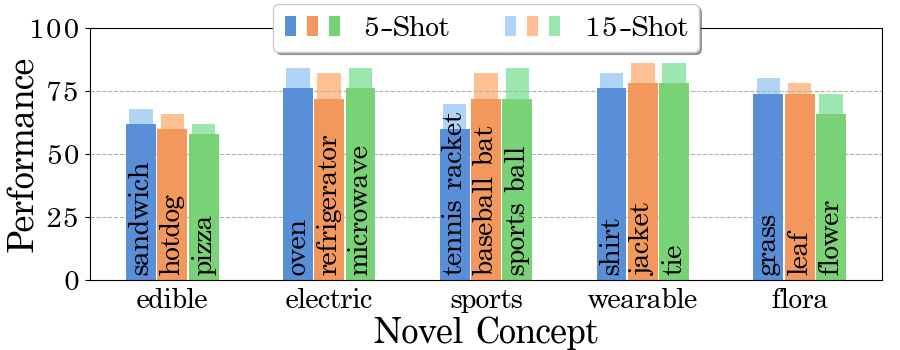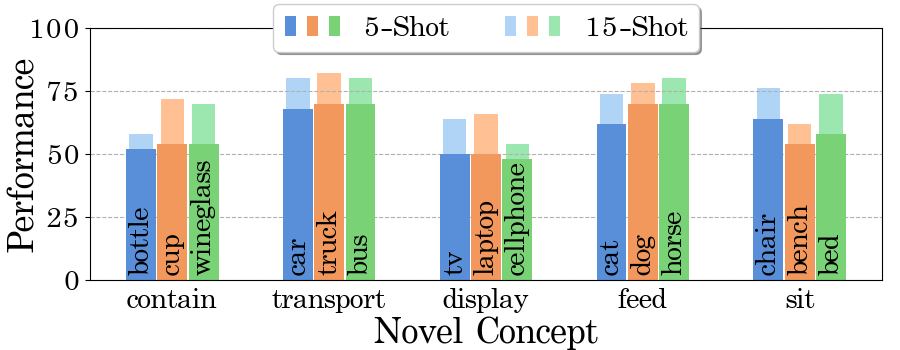

Abstract
Despite the advances made in visual object recognition, state-of-the-art deep learning models struggle to effectively recognize novel objects in a few-shot setting where only a limited number of examples are provided. Unlike humans who excel at such tasks, these models often fail to leverage known relationships between entities in order to draw conclusions about such objects. In this work, we show that incorporating a symbolic knowledge graph into a state-of-the-art recognition model enables a new approach for effective few-shot classification. In our proposed neuro-symbolic architecture and training methodology, the knowledge graph is augmented with additional relationships extracted from a small set of examples, improving its ability to recognize novel objects by considering the presence of interconnected entities. Unlike existing few-shot classifiers, we show that this enables our model to incorporate not only objects but also abstract concepts and affordances. The existence of the knowledge graph also makes this approach amenable to interpretability through analysis of the relationships contained within it. We empirically show that our approach outperforms current state-of-the-art few-shot multi-label classification methods on the COCO dataset and evaluate the addition of abstract concepts and affordances on the Visual Genome dataset.

